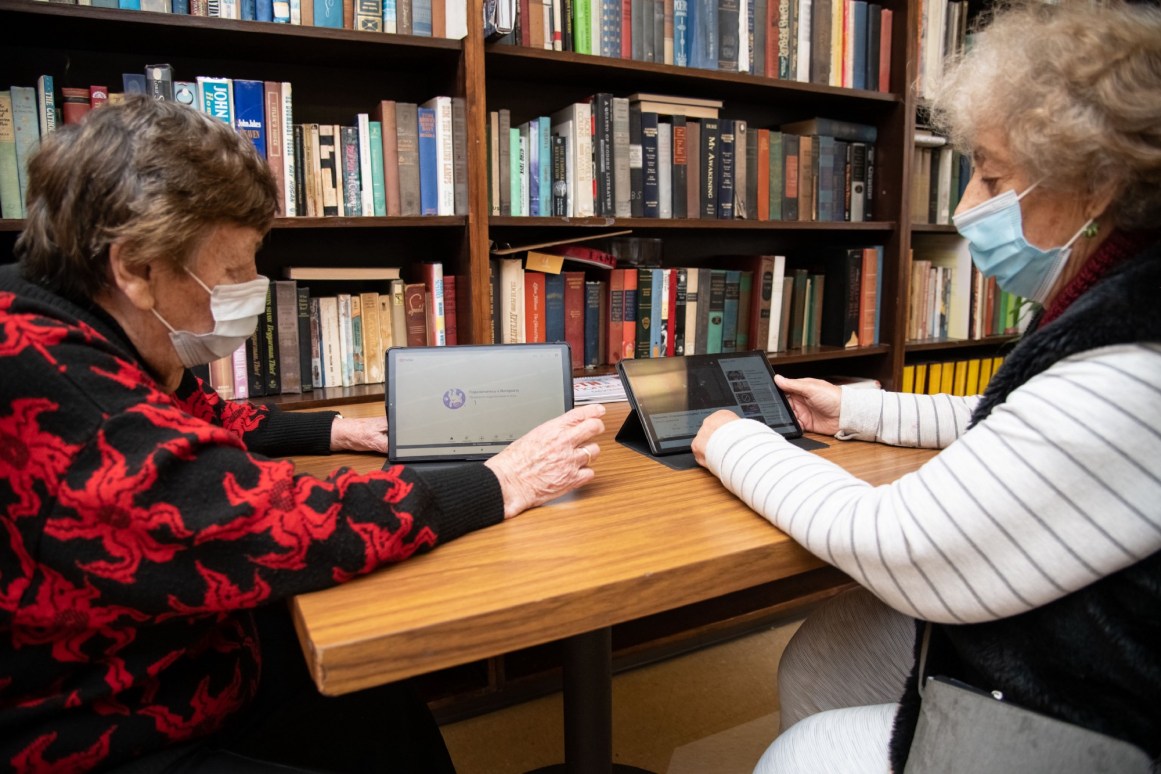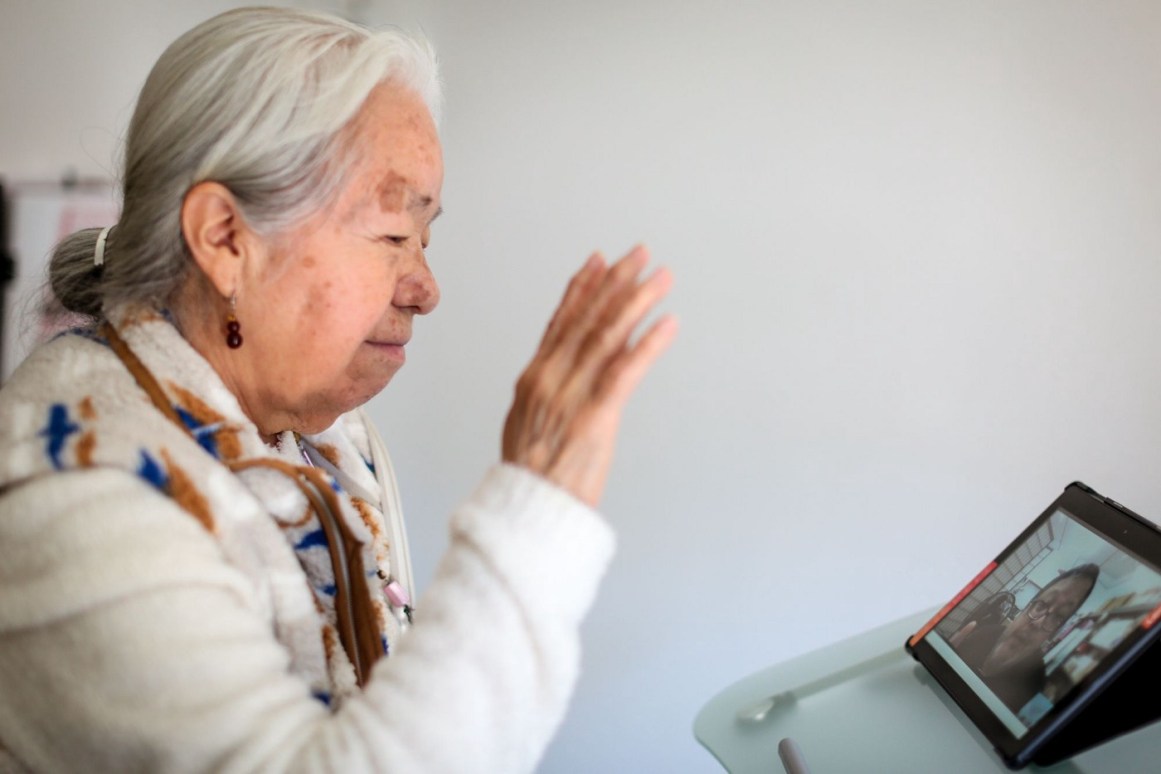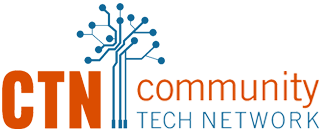In 2021, a quarter of Americans aged 65 and older are not using the internet. Beyond access to broadband and devices, how can we ensure seniors have the digital skills necessary to benefit from technology?

For a moment, imagine being a senior who has limited to no prior experience using technology. Maybe you’ve used a desktop computer at a community center or maybe you know how to make calls on a cell phone, but more complicated platforms — like Zoom, Google Applications, or YouTube — feel completely foreign. You are confused by all the terminology. You are fearful that your information won’t be safe. Ultimately, you feel too intimidated by the internet to start learning now. And besides, how might it be useful to you?
What you might not realize is that with the tools of the internet you could talk with a relative across the country and see them face-to-face. You could dive into historical archives and explore virtual museums. You could streamline the process of applying for social services and benefits. You watch videos, search for music, send photos, practice language skills, or take online classes. You could even see your doctor and discuss a health problem without ever having to leave the comfort of home.
While the internet is certainly a practical tool — connecting us to essential services and information — it is also a catalyst for curiosity and communication. This is especially true for older adults with a higher likelihood of feeling lonely or isolated. And yet, about a quarter of Americans aged 65 and older are not using the internet in 2021 (Pew). That means that millions of people are missing out on the benefits of life online, as well as the essential services and information it provides.
Since the internet’s earliest days, there has been a gap between those who can fully utilize and benefit from technology and those who cannot. This so-called digital divide persists today — often disproportionately affecting certain populations and widening long-standing social inequities. According to Pew’s recent publication, The Internet and the Pandemic, older adults are the least likely to be active online. Older adults also report having the lowest levels of tech readiness — that is, “they either have little or no confidence in their ability to use their devices or generally need help setting up and learning how to use new devices.”
As our culture further integrates digital technologies into our daily lives, the damaging effects of disconnection become increasingly visible. Conversations surrounding the digital divide typically focus on broadband access and affordable internet services. And while access is an entry point to the digital world, it is not a bridge across the divide.
For seniors and other underserved populations — such as monolingual immigrants, low-income adults, and those with lower education levels — digital skills training is a crucial component of getting connected. What use, after all, is high-speed internet without the knowledge or tools to use it?
Going Virtual

As the pandemic shifted essential services and information to virtual formats, the digitally unconnected were left further marginalized. Many online tools and services are designed to make life easier, but we often take for granted that not everyone can access and use them. One example is this past year’s widespread surge in virtual healthcare.
Telemedicine is often touted as a solution to healthcare inequalities. It can offer convenient, flexible, and more affordable care options to millions of Americans — especially those who lack accessible and quality healthcare in their region or need to stay at home due to health concerns/disabilities. While the benefits of this online tool are clear, they often go underutilized by the people who need it most.
According to a study by UC San Francisco, more than a third of adults over age 65 face potential difficulties seeing their doctor via telemedicine. This could be due to inexperience with technology, fear of sharing information, or a lack of access to high-speed broadband and up-to-date devices.
To utilize virtual visits, seniors need a robust digital skillset — from troubleshooting audiovisual platforms, to navigating patient portals, to uploading information/documentation. Without a system in place to ensure the usability of telehealth for all patients, millions of people are cut off from care.
Telemedicine is just one example of the problems that arise when we ask people to transition to virtual alternatives without providing the tools to do so. In 2016, Pew researched the digital readiness gap — finding that 52% of Americans are hesitant to embrace new technology. Many are unaware of the full capacities of the internet. Some have concerns about trusting online information. A number feel little to no confidence in their computer skills.
Another study by the city of Seattle found that certain digital tasks are used far less frequently than others. These include looking for a job online, searching for a home or rental online, accessing telehealth, and applying for benefits (Medicare, VA, Social Security) online. These skills are essential to full participation in society, yet without proper training, the digitally unprepared are left behind.
As we increasingly move programming, socialization, and educational resources online, we cannot assume that everyone can easily follow. Online platforms are great options to have, but they are not inherently inclusive. Some people need extra support in transitioning to a digital world.
A People-centered Approach
At Community Tech Network, we are striving to eliminate the digital divide by providing digital skills training while helping our learners acquire home internet and a device. We recognize that access to technology is only a partial solution. Connectivity needs to be coupled with digital skills training that is relevant and accessible to all learners no matter their language, age, or socioeconomic status.
Our programs — such as Home Connect and Sunset Tech Connect — help seniors and other vulnerable populations learn to use technology in a way that is not intimidating and accommodates their specific needs.
Luis Mascarenhas, a participant of our Home Connect program, had regularly visited community computer labs before the pandemic but soon found himself stuck at home without connectivity. He had never navigated a touch-screen tablet and though hesitant to begin learning, he thought he’d give our one-on-one virtual digital literacy lessons a try.
After completing the program, Luis felt confident to explore the internet independently. He uses his device to listen to music, audiobooks, and religious services. He was able to update his resume and apply for jobs. He has assisted others in getting registered online for vaccine appointments. He even got reconnected with family members abroad whom he hadn’t seen in years. “With the help of my instructor and the tablet, it has been a miracle,” says Luis. “I used to have an old flip phone. I had never seen someone on a video call. It is amazing to see someone there on the other side.”
Another one of our learners, Jose, found the internet to be especially intimidating before joining our program. As an immigrant whose first language is not English, he felt excluded from the digital world and fearful that he would make too many mistakes. After just five weeks, however, Jose is using the internet freely.
“I feel more comfortable and open to learning more about computers,” reflects Jose. “I now have more patience with technology. I use my email more often, research information online, and share information with friends and family. Usually, when someone teaches me about computers, I feel very pressured to the point where it is hard for me to concentrate, but the instructor made us feel comfortable. It felt like we were learning at our own pace. The teacher established a friendly and respectful relationship so that we all felt like we were the same and not like she knew more than others.”
While facts and figures quantify the digital divide, real stories from real people illustrate its impacts. In our thirteen years of experience getting people online, CTN has witnessed the profound and measurable impact technology can have on seniors’ quality of life. For Luis, Jose, and hundreds of other senior learners, the internet provides a way to stay connected and active in their later years.
Bridging the Divide
The digital divide is no longer a division between those with access to technology and those without it. A holistic explanation of the digital divide must consider an individual’s level of preparedness for understanding, utilizing, and working with technology.
Recently, the bipartisan Infrastructure bill allocated $65 billion towards addressing the digital divide. This funding has tremendous potential to close the gaps between those who can regularly utilize technology and those who cannot. However, if we want to strive towards a more inclusive digital world, we must ensure that resources are specifically allocated to digital skills training.
Through collaborative partnerships, volunteer programs, and funding opportunities, we can help everyone — regardless of age or income level — achieve the access and skills needed to take advantage of the power of the internet.
Community Tech Network is interested in working with like-minded organizations, cities, and nonprofits to expand digital literacy and eliminate the digital divide. If you would like to get in contact, reach out to us at inquires@communitytechnetwork.org or check out our partner page for more information.
By Anna Beth Lane, Communications Associate at Community Tech Network |


Comments are closed.